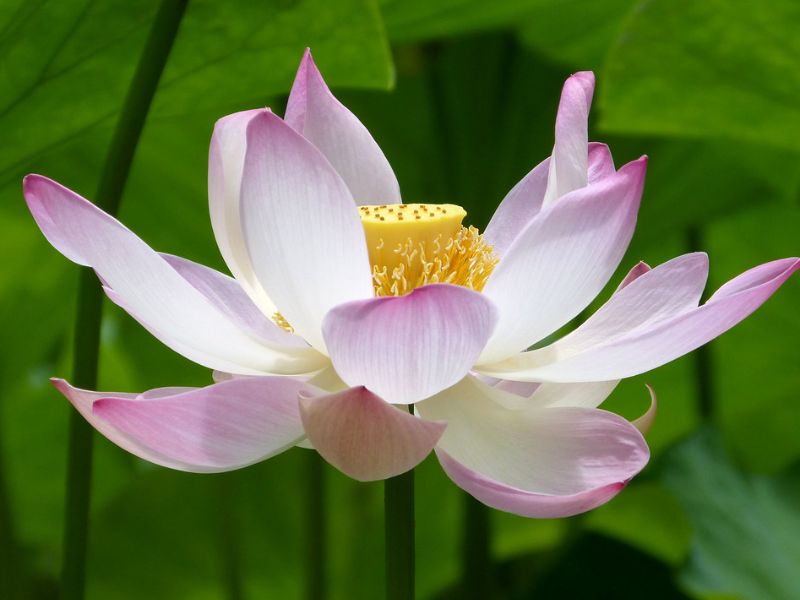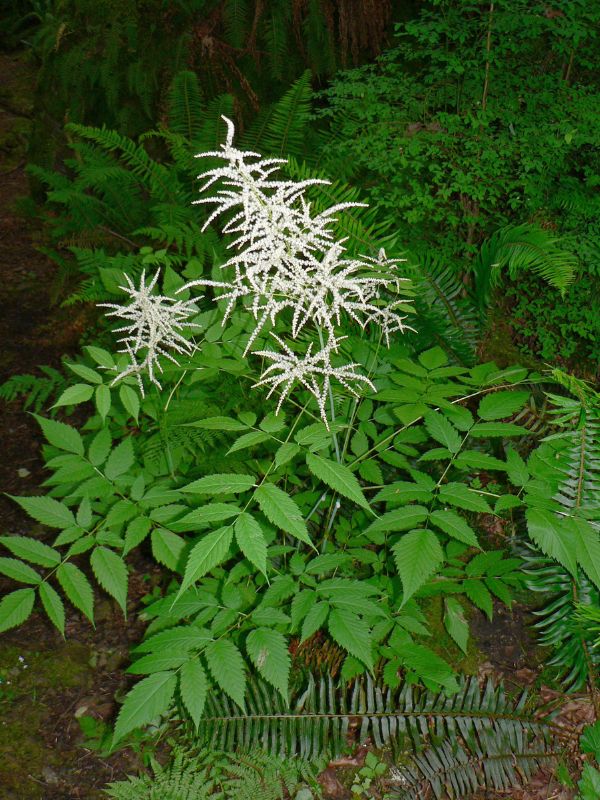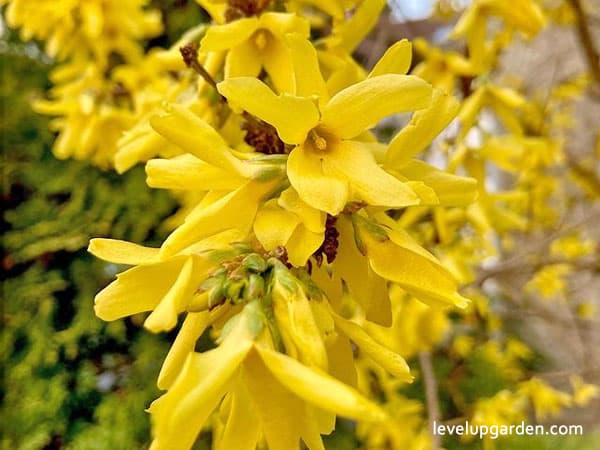The 20th Century pear is one of the most popular Asian pear varieties in the United States. It is a dessert variety that yields medium to large round pears with smooth yellow skin from late summer to early fall. The fruit is known to be crisp and mildly sweet.
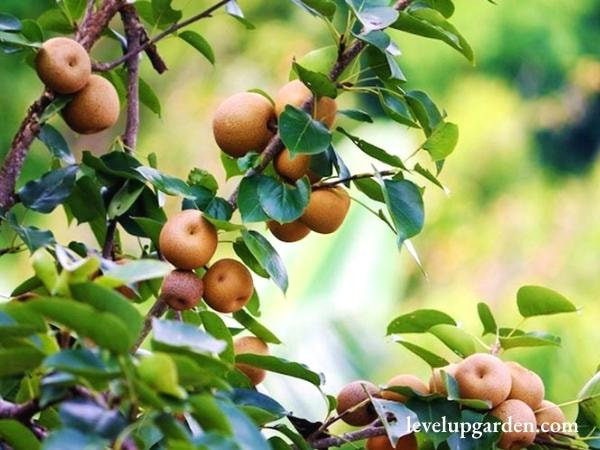
Moreover, Twentieth Century is self-fruiting, but can be pollinated by other varieties at the same flowering time, such as Bartlett and New Century. It is tolerant to cold, drought, and heat, and is well suited to warm climates. It produces bright flowers in early spring, juicy fruit in late summer, and red-orange foliage in fall. It is probably the most popular Asian Pear variety in the United States.
Asian pears provide a tasty alternative to European pears for those of us who do not live in warmer regions. Asian pears are resistant to fungi, making them especially suitable for gardening in cool, rainy climates. The 20th Century pears are highly storable and produce large, sweet, crisp fruit, making them one of the finest pears in Japanese culture. We will show you how to grow 20th Century pears, so you can choose the best 20th Century pear for your garden.
I. Plant Profile – An Overview of the plant
| Common names | Asian Pear, Pear ‘Nijisseiki’, Nijisseiki Asian Pear, Pyrus pyrifolia ’20th Century’, Twentieth Century Asian Pear |
| Botanical names | Pyrus pyrifolia ‘Nijisseiki’ |
| Genus | Pyrus |
| Species | pyrifolia |
| Family | Rosaceae |
| Mature Height | 12-30 ft. |
| Mature Width | 8-15 ft. |
| Sunlight | Full Sun |
| Growth Rate | Moderate |
| Harvest Time | August – October |
| Exposure | Full Sun |
| Height | 10′ – 15′ (3m – 4.5m) |
| Spread | 10′ – 12′ (3m – 3.6m) |
| Water Needs | Average |
| Maintenance | High |
| Soil Type | Clay, Loam, Sand |
| Soil pH | Acid, Alkaline, Neutral |
| Soil Drainage | Moist but Well-Drained, Well-Drained |
| Tolerance | Clay Soil |
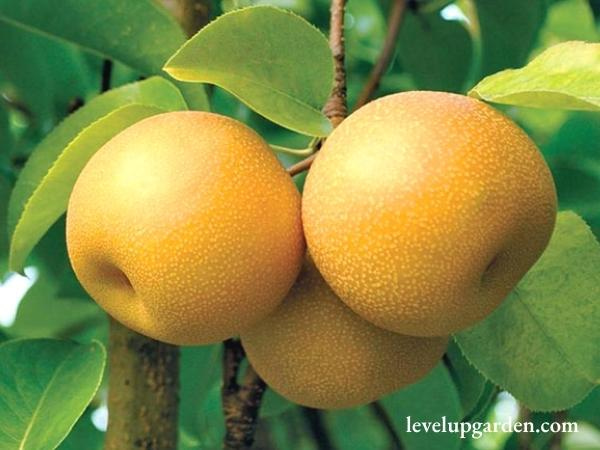
II. Appearance
Nijisseiki Asian Pear (20th Century) produces fragrant white flowers in spring. These flowers have purple to red stamens and produce numerous berries in late summer. The leaves are oval and pointed, turning from red to orange in colder weather.
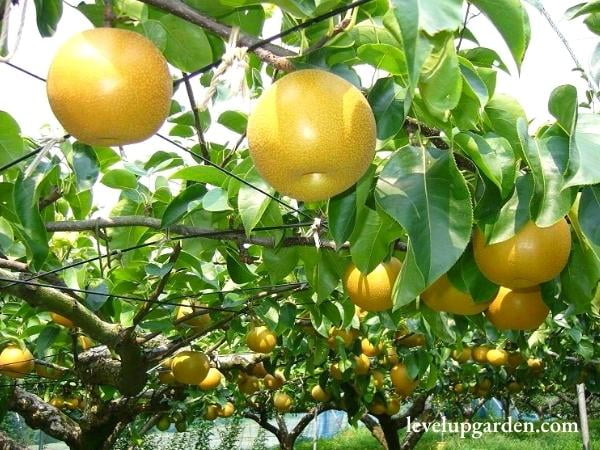
Nijisseiki Asian Pear (20th Century) is cold hardy to USDA zones 5 through 9. It is self-fruiting to some degree, but planting two compatible varieties nearby will increase production. Mature trees can grow 25 feet (8 m) and are expected to begin bearing fruit 7 to 10 years after planting. It may take a little longer to enjoy juicy pears, but with good care, this is a long-lived tree that will last at least another generation.
The fruit size of Century Asian Pear is medium to large, they are round with smooth yellow rind and several lenticels. It ripens in mid-August. The flesh is white and it has a clean taste, crisp texture, it is also juicy and sweet tasting.
The leaves of this tree are long, oval in shape, bright green, and glossy. When autumn arrives, these leaves turn into stunning fire-red colors. The leaves of Century Asian Pear Tree are pointy, giving it a sharp look.
The flowers bloom in clusters of 5 white petals. It has red to purple stamens. You can expect these flowers around April.
III. Growing and Care Conditions
Just like other fruits, production peaks in sunny, and grows best in well-drained soils. Keep young trees moderately moist and tailor them to be center leaders so that there is adequate air flow through the center. When fruit is ready to bear, fruit may be thinned to avoid stressing the branches, resulting in larger, healthier pears.
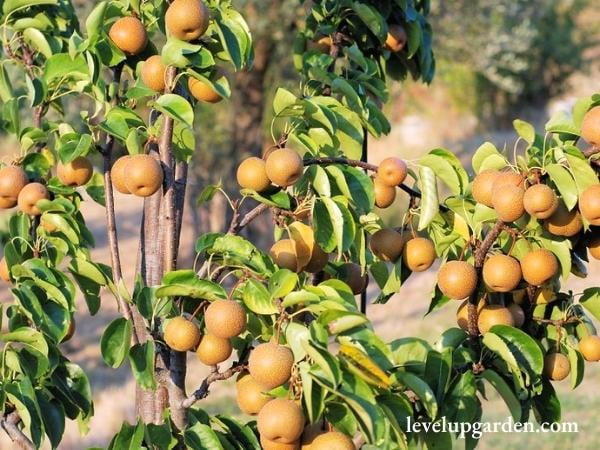
One of the most popular Asian pear varieties in the U.S., Pyrus pyrifolia “Nijiseki” or “20th Century” is a dessert variety that produces a profusion of fragrant creamy white flowers in mid-season (mid spring). They grow in clusters along the branches and are truly spectacular. Then, in late summer and early fall, large quantities of medium to large round pears with smooth yellow skins are harvested.
Moreover, the flesh is white and refreshingly sweet. Nijisseiki is self-fruiting and can be pollinated by trees of other varieties at the same flowering time, such as Bartlett and New Century. It has shiny, copper-colored leaves in spring and oval, glossy green foliage that turns bright red-orange in fall.
It is cold, drought, and heat tolerant and is well suited to warmer climates, as it requires 300 to 400 hours for buds to open in the spring, and winter temperatures must be at 45ºF or lower. The flowers are beautiful, the foliage is lovely, the pears are flabby, the fall is charming, and the winter is picturesque.
Planting
Choose a location so that the rootball is twice as wide and about the same depth as the rootball. Make sure it is in a sunny spot in the garden. Be sure to cover the plants and provide a small source of heat, such as a lamp, in case of frost in the spring.
Once the hole is dug, carefully loosen the roots and position the plant in the hole so that the trunk is straight. Then, backfill the hole completely and remove any air bubbles by treading lightly with a spade. Once settled, water the plant thoroughly.
Watering
Water 20th Century Asian Pear Trees as needed, at least an inch or two once a week. If the weather is hot and dry during the height of summer, increase the amount of water to maintain proper hydration and humidity. Remember, do not water pear trees after the first frost in the fall. You can resume watering after the last frost in the spring.
Pruning
Pears produce their best harvest when pruned annually. They should also be thinned to a spacing of about 12 cm in late spring and early summer if you want a good quality fruit crop. When pruning, it is important to cut branches in the center of the pear tree to encourage them to stand upright.
However, if there are competing branches, remove them to prevent multiple leaders from forming. Prune the large lateral branches to maintain the natural shape of the tree. Be sure to remove any dead, dying, or wilting branches so that the 20th Century Asian pear tree can focus its energy on growing healthy and producing plenty of fruit.
Pests and Diseases
Be careful of aphids, caterpillars, codling moths, pear spider mites, pear worms, pear and cherry pests, pear mold, pear rust, brown spot, flower blight, and burn. The main problems in the 20th century are Alternaria black spot, fire blight, and codling moth. Tough fungicides and good growing management can minimize or avoid these problems. Growth rate is moderate and can be pruned to keep fruit low enough to allow hand picking.
IV. Uses
The 20th Century Pear is an excellent ornamental fruit tree for your garden. The fruit is very tasty, nutritious, and easy to grow. Furthermore, they can be enjoyed as an ornament in any season.
Asian pears are also believed to cleanse the lungs, hydrate the skin, improve the digestive system, and strengthen the immune system. Because of their delicious taste and wonderful texture, Asian pears are ideal for cooking. It is also served on its own as an elegant or comforting dessert, or even for incorporating marinades in Korean cuisine.
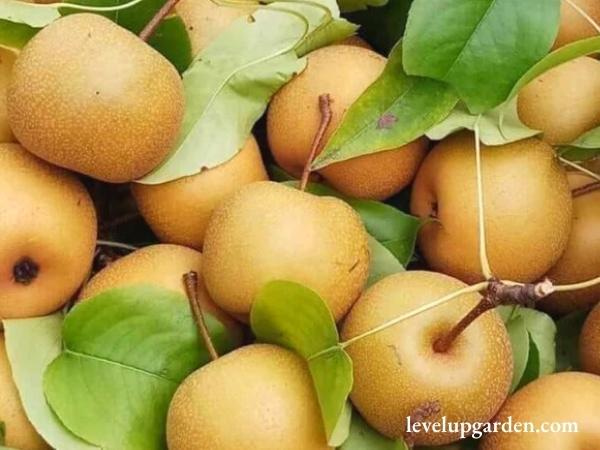
While the fruit is obviously of great benefit, that is not all that can be gained from this tree. In early spring, 20th Century produces dramatic, showy, pure white flowers. These large flowers contrast beautifully with the glossy black foliage and fill the garden with a sweet fragrance.
V. Why should you buy this plant
The Asian pear is the best part of an apple and a pear in one fruit. The 20th Century Asian pear smells like a pear but is crisp, firm and round on the outside, like an apple. The taste is more sweet and warm, like a pumped-up pear, but the flesh is smooth and surprisingly juicy. That’s why the Asian pear is called the “Apple Pear!” .
Unlike many other fruit trees, 20th Century Asian pears do not need a lot of work. With just a little pruning, you can harvest an abundance of fresh, ripe fruit year after year. Harvesting is as easy as pulling the pears right off the tree and eating them.
More and more fruit will be produced each year. Nijisseiki pears increase in yield over time, it is very likely that in the second season, starting with a small harvest at first, each year will yield twice or three times as much fruit as the previous year. Nijisseiki is biocompatible, but if you plant it with other pear trees in your garden, each tree will yield even more!
A large harvest does not mean that the fruit is wasted. Twentieth-century pears are among the most durable fruits once ripe. Once the fruit is removed from the tree, harvest and store in the refrigerator, you can keep it for about six months without spoiling. Nijiseki is also an ideal fruit for canning or freezing because of its dense, firm flesh. Its firm pulp also makes it ideal for canning and freezing.
The best part of 20th Century Asian pears are very low maintenance. It is self-pollinating, heat and cold tolerant, and easy to harvest. With just a little care, they will flower and produce a bountiful harvest.
In the fall, when the delicious fruit is ripe, the 20th century Asian pear tree has another gift to offer. In the fall, the handsome black leaves turn a stunning fire red. Imagine picking pears from among the autumn leaves.
Pears are sweet, but don’t feel bad about eating them. They are very low in calories and very high in fiber, so you can feel full and satisfied without feeling guilty. This sweet and juicy treat is packed with the nutritional benefits of vitamin K, copper, and potassium. In addition, it is hypoallergenic and low in acidity. Even those with sensitivities can eat it without worry.
Start growing sweet, juicy pears today. You can’t pass up the opportunity to plant this irresistible fruit in your garden. With little effort, you will get a lot in return.
VI. FAQs
Do 20th Century Pears self-pollinate?
Yes, the 20th Century Pear (Nijisseiki Pear) is self-pollinating; it bears fruit on its own. However, if you plant another 20th Century pear, the yield will increase dramatically.
How long will a 20th Century pear tree last?
The average lifespan of a pear tree is 15 to 20 years, depending on the variety and climate, provided that the tree has adequate growing conditions.
